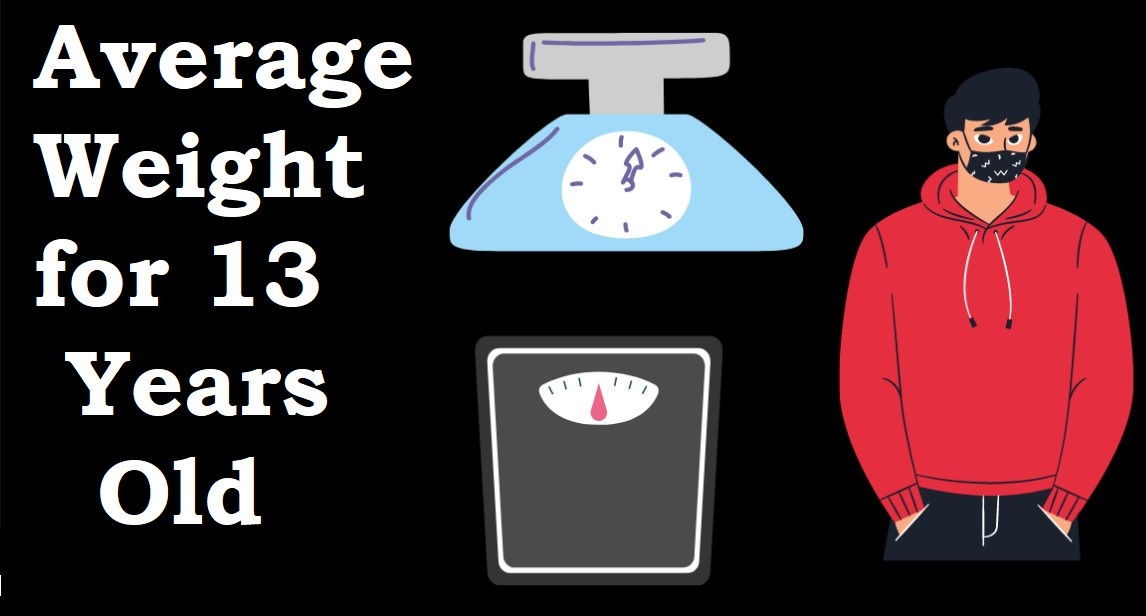The average weight for a 13-year-old child is somewhere in the range of 75 and 145 pounds, while the average weight for a 13-year-old young lady is somewhere in the range of 76 and 148 pounds. For boys, the 50th percentile of weight is 100 pounds. For young ladies, the 50th percentile is 101 pounds. There’s no doubt that anyplace in that range is viewed as normal, and not without help from anyone else who thinks about overweight or underweight.
Pubescence follows a remarkable course of events for every individual youngster. From the time it begins, children might grow up to 10 inches and gain muscle, fat, and bone as their bodies create the grown-up structure. These progressions might happen unexpectedly and include fast weight gain, which might prompt self-awareness in kids as they conform to their new bodies. Some might enter adolescence as early as age 8. Others may not start until they reach their teenage years. Thus, there is a broad range of “ordinary” weights, shapes, and sizes.

Table of Contents
The Average Weight of a 13-Year-Old Boy
The weight distribution for 13-year-old boys is somewhere in the range of 75 and 145 pounds. Weights in the 50th percentile for this age group at 100 pounds. Assuming a child falls into the 50th percentile for weight, this implies that of 100 children his age, 50 will weigh more while another 50 will have less.
Assuming that a child falls in the 25th percentile for weight, 75 out of 100 children will weigh more and 25 will measure less.
The Average Weight of a 13-Year-Old Girl
The weight distribution for 13-year-old girls is somewhere in the range of 76 and 148 pounds. Weights in the 50th percentile for this age group are 101 pounds.
A weight in the 50th percentile indicates that of 100 13-year-old young ladies, 50 will weigh more while 50 will weigh less, etc.
BMI
BMI is a method for assessing muscle versus fat ratio. The formula consolidates weight and level. A high BMI can indicate a high muscle to fat ratio. It can also indicate an increased risk of weight-related medical problems.
For a more exact evaluation of muscle to fat ratio, an individual can investigate skinfold estimations, submerged gauging, and bioelectrical impedance. In any case, these tests might be convoluted and costly, and the outcomes will more often than not correspond well with BMI.
The estimation of BMI is different for adults and kids. In kids and teenagers, BMI considers age, and specialists often refer to it as “BMI for age.”
The CDC gives a BMI calculator to kids and adolescents. It is necessary to enter the child’s age, level, weight, and sex. The calculations give the BMI and demonstrate whether the weight is within a healthy range.
BMI, based on average weight, falls into percentiles. These can help guardians, parental figures, and pediatricians decide if a child is performing well for their age and level.
Other Factors to Consider
Scope of variables can influence the heaviness of a 13-year-old, including:
Adolescence and Advancement
Adolescence is a period of rapid development for kids and teens. It includes the body getting ready for sexual development.
Adolescence usually occurs in young ladies between the ages of 10 and 14 and young men between the ages of 12 and 16. The interaction can be quite different for young men and teenage women.
Adolescence can make the height and weight of 13-year-olds fluctuate widely.
Hereditary Qualities
Hereditary qualities, as well as lifestyle factors such as diet and physical activity, affect a child’s weight and body type.
Research indicates that a few qualities are strongly connected with stoutness.
Body Piece
The numerous factors in an individual’s physical structure can impact the amount they gauge. For instance, certain individuals are more strong, and they might weigh more since muscle weighs more than fat. This could especially affect young athletes.
Likewise, taller kids are probably more likely to weigh more than shorter kids, although this isn’t generally the case. Since the BMI computation considers level, it can give a more accurate picture of a person who does not reach their ideal weight.
Geographic Area
A youngster’s country of origin can affect their body composition, weight, and health.
These distinctions are based on elements like financial status, access to nutritious food sources, and social practices.
Should a 13 Year Old Go on a Tight Eating Routine?
Assuming your high schooler’s BMI falls in the “overweight” or “hefty” category, that doesn’t necessarily mean an eating regimen is essential. With regards to your high schooler’s well-being, it is imperative to remember that diet isn’t the main variable. An enlisted dietitian nutritionist (RDN) and a doctor can assist with directing you through the most common way of understanding different appraisal measures or deciphering weight patterns in your adolescent’s clinical history.
Abstaining from excessive food intake can increase well-being risks for a 13-year-old. Teenagers shouldn’t attempt to get thinner unless they are coordinated with and closely monitored by a specialist and dietitian. Creating better lifestyle habits that stick will assist a 13-year-old high schooler with getting to a solid weight classification much faster than an eating routine. Counting calories can lead to unpleasant things to do and cluttered eating designs.
Without clinical proof (signs and side effects) of hidden conditions causing weight changes, it is by and large not suggested that teenagers start a revised and improved eating routine or restrict their choices of food.
Assuming that you think your young person is experiencing changes in weight because of a fundamental underlying driver, bringing these worries to your high schooler’s medical care is significant. Ask specific questions about what you as a parent and your family can do to assist with empowering the recovery process. This can enable the experts to recognize the cause and develop an appropriate treatment plan to follow up.
FAQs
The weight range for 13-year-old boys is somewhere in the range of 75 and 145 pounds. Weights in the 50th percentile for this age group at 100 pounds. Assuming a youngster falls into the 50th percentile for weight, this implies that of 100 children his age, 50 will weigh more while another 50 will weigh less.
The following are five ways to help your child grow up invigoratingly:
Eat reliably
Eat bigger than ordinary segments
Select more unhealthy food sources
Drink lots of juice and low-fat milk
Appreciate peanut butter, nuts, avocado, and olive oil
